Situation of the ground forces in 1950.
The young state of Israel was surrounded by Arab nations that were poised to destroy it since the 1930s when the first exodus started. By an order from Defence Minister David Ben-Gurion on 26 May 1948, the Israeli defence forces were created, immediately embroiled in the 1948 War of Independence. The main supplier of weapons was then Czechoslovakia, and there were only improvised armoured cars, ex-British or captured Arab legion vehicles in service and a few jeeps in the inventory. After the war, the need for tanks was obvious and thanks to contacts in the USA, US army stocks M4 Shermans were delivered to Israel in 1950.Shermans in service in the Israeli Army
Six former M4 Sherman of the early type have been already salvaged from a scrapyard, left from ww2 north african campaign. Since they were unarmed, they were rearmed by Krupp 75 mm field guns, and later with 105 mm M4 howitzers. When other tanks of the 1944 76 mm M1 gun type arrived in better conditions, they were all designated Sherman M-1 in Israeli service. The Super Sherman M-1 was the designation for the M4A1(76) fitted with HVSS suspension, while Sherman M-3s (Sherman degem Alef prior to 1956) was the IDF designation for the 75 mm gun M3. The Sherman M-4 (Sherman degem Bet prior to 1956) was the designation for the 105 mm howitzer M4 model.There were also many variants, but the detail would be too long to expose there. These were the M-50 155 mm, Ro\'em, L-39, and Makmat 160 mm SPGs, and the MAR-240, Episkopi (MAR-290) Kilshon rocket-launcher tanks, and other variants like the Sherman Morag (Crab), Trail Blazer (Gordon) ARV, the Sherman Medical Evacuation Tank or "Ambutank" or the Eyal Observation Post Vehicle. All these vehicles served in the Egyptian War of Attrition (1968–70) and the Yom Kippur War.
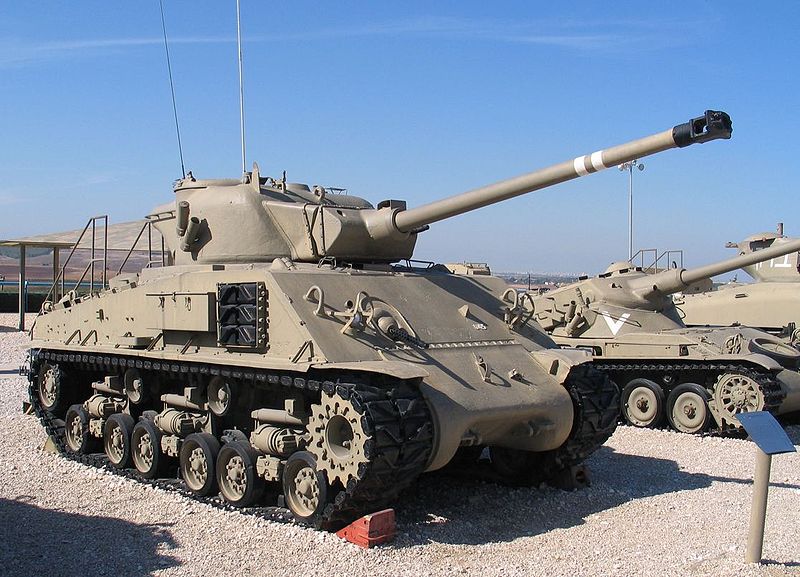
The M50 Sherman
The origin of the program started in 1953 when an Israeli delegation visited France to examine the promising AMX-13 light tank. Although they were not convinced by the thin armour of the vehicle, the gun attracted their interest. Eventually the Israeli government decided to purchase no less than 400 of these and to devise a mobility-based tactical use alongside the Shermans in service. These tanks would serve extensively during the Sinai campaign. The AMX-13 gun being the high-velocity 75 mm gun CN 75-50 (a development of the German 7.5 cm KwK 42 L/70 of the Panther tank), it was decised to rearm a large portion of the Shermans in the inventory with this piece of ordnance. An order was placed in France in 1955 and an experimental marriage of a M4A1(76) turret with the new gun was shipped in Israel to be tested. The next year, in March 1956, the Israeli Ordnance Corps began conversions in new facilities with the large supplies of the French gun purchased in the meantime.The result of this conversion was named officially Sherman M-50, although it was also known outside Israel as the "Super Sherman". This marriage was reminiscent of the ww2 British Firefly in essence and had similar performances. The old 1944 M4A4(76) turret was kept but, a large counterweight was added to the rear of the basket. A first batch of 50 conversions on M4A4(76)s was delivered all with VVSS suspensions and Continental R-975 gasoline engines. But these were not especially successful. The weight of the gun added some stress on the engine, resulting in breakdowns, as well as compromised the stability and reduced mobility. So the next conversions were all performed on Diesel versions (Cummins V-8 460 horsepower) and HVSS suspensions. For this reasons, this conversion batches were known as the M-50 Continental or Mk.I and M-50 Cummins or Mk.II. In total 300 Shermans were so converted into M50 until 1964 along with some conversions of M10 Wolverines tank destroyers.
The M51 Sherman
By 1961 the Israeli Government ordered the new and more powerful French 105 mm Modèle F1 gun. However due to their length, these were modified for the use in Shermans: The barrel was reduced from 56 caliber to 44 and equipped with a muzzle brake, while ammunition was altered to use a smaller cartridge. Due to the nature of the conversions (based on Cummins M4A1s) the hulls were married with modified M4(76) turrets. By 1965 the new tanks named officially M51 Sherman but also "Super Sherman" or "Isherman" (or Israeli Sherman). The M51 was revealed to the public in a Independence Day ceremony in 1965. 180 Shermans were so converted. By this time M50/51 constituted the bulk of the Israeli tank force, prior to obtain the British Centurion. Non-converted Shermans were used for other duties (see above).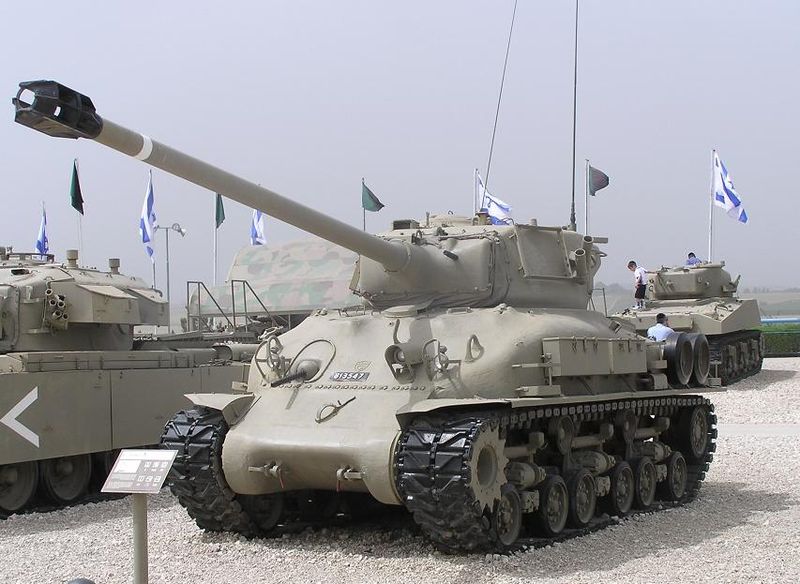
The "super sherman" in action
The first test came in Operation Kadesh in the Sinai against the Egyptian Army, part of the Suez crisis in 1956, for the first batch (M50 Mk.I). Strangely enough, they were confronted with Egyptian M4A4s rearmed with FL-10 AMX-13 turrets. In 1964, the Major Israel Tal was made famous by using a M50 (his personal tank) and a Centurion with fellow tankers trained for long range shootings. He destroyed a Syrian recoilless rifle and later height Syrian tractors at 2000m during the border dispute born from the diversion of water from the Sea of Galilee to the Negev Desert.But the Main test came with the Six-Day War in 1967. Virtually all M50 and M51 were thrown in action in Golan Heights and the West Bank and the Sinai peninsula, confronted with soviet ww2 era T-34/85s (Battle of Abu-Ageila) and SU-100 tanks. However in 1973, these tanks were again committed in large numbers, despite their obsolescence and due to the desperate nature of the struggle, against more modern T-54/55s among others. Losses were heavier since their opponents were better armed. However it was shown that the 105 mm armed M51s were able to score kills on the T-54/55 and T-62s using HEAT ammunitions.
The M50s of the first batch never participated in this war, being removed from service the previous year. The M50 Mk.II were gradually phased out after the war in the late 1970s, and the early 1980s for the M51. During the Lebanese civil war, 75 M50s were given and distributed among the four Israeli-supported Christian militias in 1976. Some were captured and re-used by the PLO. Another batch was sold to Chile, rearmed with 60 mm HVMS guns. Argentina also rearmed some of their Shermans with 105 mm guns form their own AMX-13s.
Links
The Israeli M50/M51 Sherman on WikipediaM51 Sherman specifications |
|
| Dimensions (l-w-h): | 6.15 oa x 2.42 x 2.24 m (20.2 x 7.1 x 7.4 in) |
| Total weight, battle ready: | 35 Tons (26000 ibs) |
| Crew : | 4 (2 Drivers/gunners, Commander, loader) |
| Propulsion: | Cummins V-8 460 horsepower diesel |
| Suspensions: | Horizontal Volute Springs Suspensions (HVSS) |
| Top Speed | 105 kph(65 mph) 40-70 kph off-road |
| Range (road)/Fuel consumption | 400 km (250 mi) for 380L - 50L/100 |
| Armament (see notes) | Main: 105 mm FL11 with 40 rounds (4 in) Sec: 1 x 12.7 mm (0.5 in) M2HB, 2 x 8 mm (0.3 in) LMGs, 4500 rounds |
| Armour | Hull nose and turret 70, sides 40, bottom 15, rooftop 15 mm |
| Total Converions (M51) | 180 |
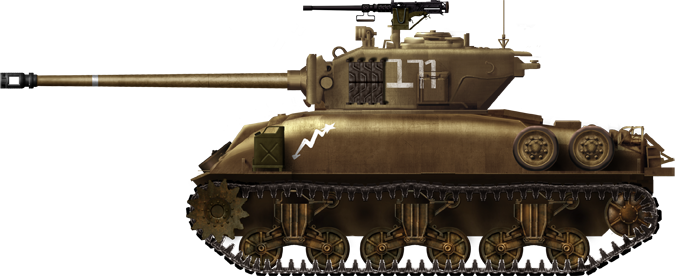
M50 Sherman Mark.I (Continental) in action during the Suez crisis in 1956.
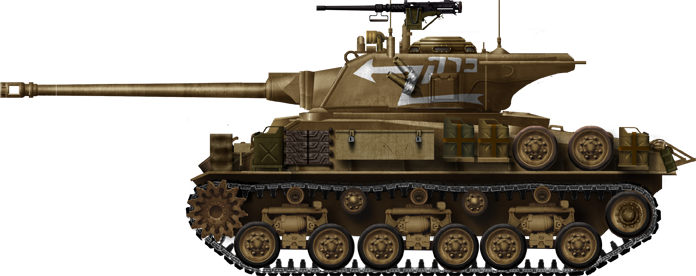
Command M50 Sherman Mark II (M4A4 Cummins/HVSS) during the war of 1967, Golan heights, Syria. Unit unknown.
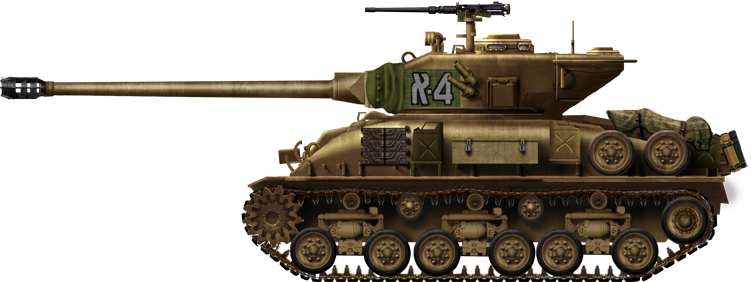
M51 Sherman, or Isherman at the Golan heights, 1967 war.
M50/51 Sherman Gallery
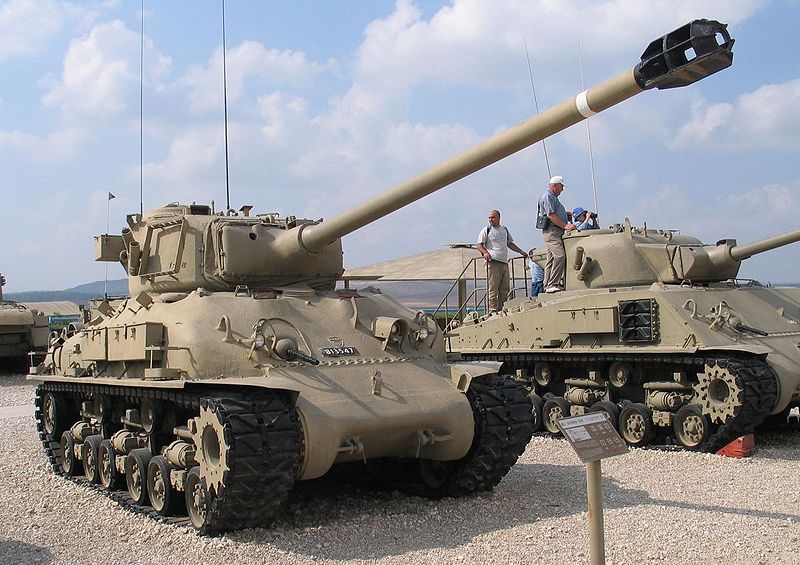
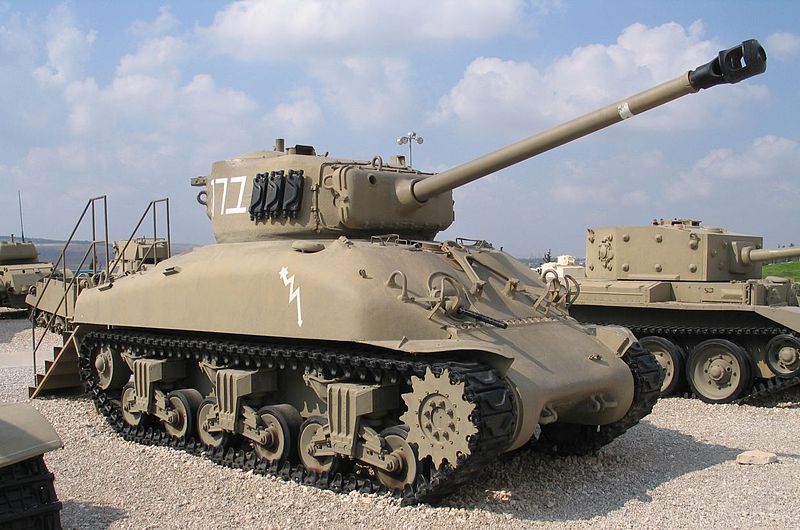
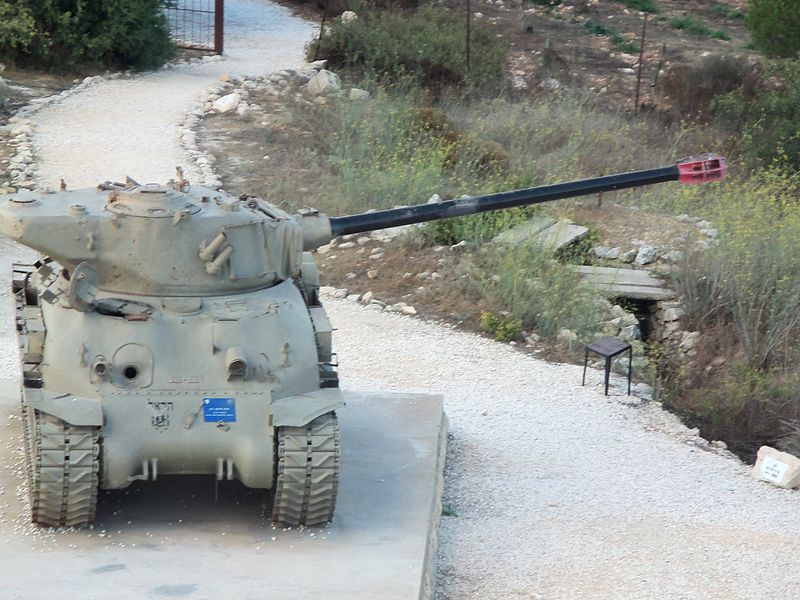
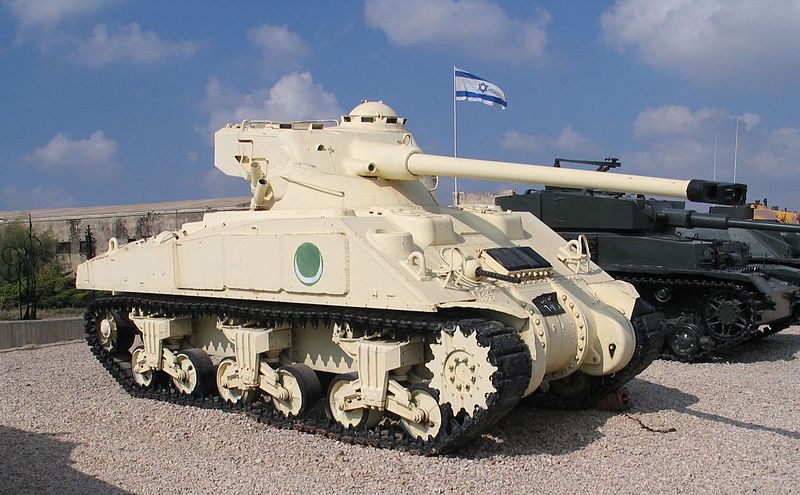
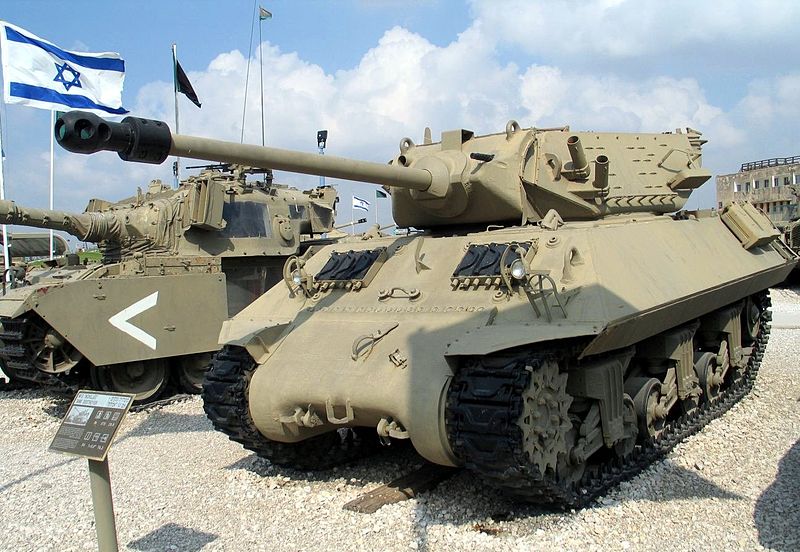

Cold War Tanks


































Cold war tanks posters

Cold War Main Battle Tanks

Cold War Soviet Army
Museums, Movies, Books & Games
The Tanks and Armor in pop culture
Tanks and armored vehicles in general are only really grasped when seen first person: The mass, the scale, it's all there. Explore also the way tanks were covered in the movie industry, in books and in video games.Movies:
Best tanks movie on warhistoryonline.com
On imdb.com
On bestsimilar.com/
miltours.com
liveabout.com/
watchmojo.com
Video Games:
pcgamesn.com
historyhit.com
levvvel.com
vg247.com/best-tank-games
mmobomb.com/
alienwarearena.com

